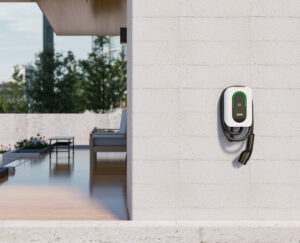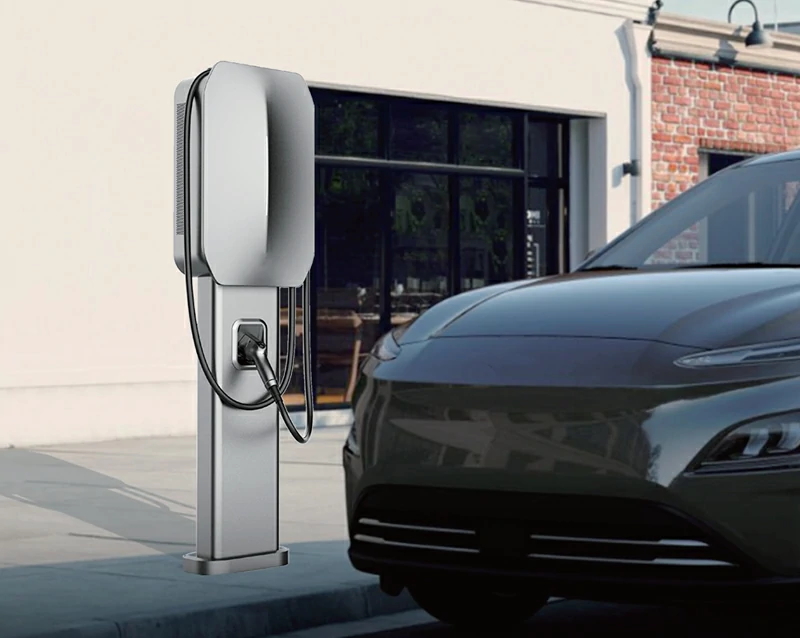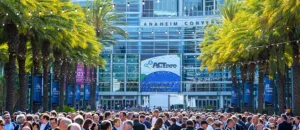
Vehicle-to-Grid (V2G): The Future of EV Charging and a Smarter Energy Grid
Vehicle-to-Grid technology is redefining the role of electric vehicles, turning them into dynamic energy assets that benefit drivers, utilities, and the planet.

After a slow start, the acceptance and development of ev is now increasing rapidly. But the lack of dc fast charging station- is undermining customer interest. The right power electronics topology can advance the infrastructure.
Currently, the only way to refuel a fuel-powered vehicle is to visit one of the thousands of filling stations located along motorways, in cities and in many towns. The situation for electric vehicles is changing: while some petrol stations are equipped with charging stations, these can also be installed almost anywhere a vehicle is parked – at work, in public buildings, in service areas, in residential areas, or even in one’s own garage.
There are several types of electric vehicles, of which hybrid vehicles (PHEV – Plug-in Hybrid Electric Vehicle; Full HEV and MHEV – Mild HEV) are equipped with an alternative power source, usually an internal combustion engine. Fully battery-powered vehicles have only one electric motor and are known as BEVs (Battery Electric Vehicles); vehicles using fuel cells are known as FCEVs (Fuel Cell Electric Vehicles). Generally speaking, hybrid vehicles can charge themselves from an internal combustion engine, although some types (PHEVs) can also be charged from an outlet.
Sales of all types of electric vehicles (xEV) are set to grow significantly in the coming years, with BEVs and MHEVs growing fastest.
In order to create more xEVs, the charging infrastructure will need to be expanded accordingly. Currently, the vast majority of charging stations are located in China – fast charging stations account for more than 80% of total installations.
According to analysts at Research and Markets, the number of installed devices is expected to grow at a compound annual growth rate (CAGR) of 31.8 per cent between 2020 and 2027, with sales increasing by 39.8 per cent, suggesting an increase in prices over this period.

In order for xEVs to be charged at public charging stations, they must be standardised using common protocols. This is particularly important in regions where vehicles often cross national borders, such as Europe.
Based on many international standards, there are three main protocols worldwide. CHAdeMO (Charge de Move) was launched in Japan in 2010 and is supported by the major Japanese car manufacturers (Nissan, Mitsubishi, Toyota, Hitachi, Honda, etc.) as well as several European manufacturers. specific charging connectors. Chargers are also defined – currently up to 400 kW/1000 V. Charging stations of up to 900 kW are reportedly being considered in partnership with the China Electric Power Enterprise Federation.
Originally created by leading European and American manufacturers such as Volkswagen, Audi, BMW, Daimler, Ford, GM and Volvo, the Combined Charging System (CCS) now also includes a number of Asian manufacturers. ccs derives its AC and DC standards from the applicable IEC, SAE and ISO standards and works on charging standards up to 350 kW. More than 33,000 charging stations are currently in use, more than half of which offer 50 kW of charging power.
The current standard is Tesla’s fast DC charging station, called Supercharger, which is a proprietary standard for Tesla vehicles. More than 20,000 stations worldwide are installed using the connector/connector developed by Tesla and offer up to 250 kW of power. To expand the network, Tesla now offers adapters for some vehicles using CCS charging stations. In Europe, some Tesla vehicles are even equipped with CCS-compatible connectors.
For all standards, the charging time depends on the battery capacity, the state of charge, the power available at the charging station and the maximum possible charge rate of the vehicle. An ‘average’ car takes around 29 minutes to charge to reach a range of 266 kilometres on a 100 kWh charge. This is much longer than the 3 to 5 minutes it takes to fill up a fuel-powered car, which explains why companies are pushing for higher and higher charging rates.
There are two types of charging: on-board and off-board. The definition refers to the location where the conversion to DC takes place. On-board chargers feed AC power into the vehicle from an outlet or charging station, which the on-board charger converts to DC to charge the battery. Conversely, an off-board charger converts AC to DC internally and then feeds it into the vehicle to charge the battery directly.

Chargers have two stages in the main string – the power factor correction (PFC) stage and the DC/DC converter stage. There are various PFC boost converter/boost topologies for unidirectional charging, including NPC, T-NPC and 6-Switch.

(Source: Joint Tech DC Fast Charger)
Bi-directional operation is becoming increasingly important as consideration is given to using energy stored in vehicle batteries to power the home at a time when electricity consumption is expensive. If some diodes are replaced by switches, all topologies shown will support this mode of operation.
Silicon carbide (SiC) MOSFETs with low internal resistance RDSon (in the <40 mΩ range) are the preferred solution, especially for the higher power range, as they are more efficient compared to silicon MOSFETs. They are ideal for use in PIMs (Power Integrated Modules) as these integrated solutions offer higher performance, simplified design, reduced system size and increased reliability. switches such as IGBTs.
The DC/DC converter stage uses two main topologies: a resonant full bridge LLC and a full bridge with ZVS (Zero Voltage Switching). the LLC enables ZVS on the primary side and usually ZCS (Zero Current Switching) on the secondary side, resulting in very high efficiency when operating near the resonant frequency. Where operating frequencies are limited, LLC converters can be an efficient solution – although parallel operation is challenging due to the difficulties associated with current sharing and synchronisation.
Phase-shifted full-bridge topologies are also common and benefit from simpler control than the LLC approach. With ZVS, efficiency is high over a wide range of output voltages, making it ideal for supporting 400 and 800V battery voltages.
Despite the significant differences, the LLC and phase-shifted full bridge have similar component counts and achieve similar power densities. Both methods are suitable for synchronous secondary rectification and therefore also for bi-directional operation.
onsemi offers a range of building blocks for high-efficiency EV charging systems, including SiC diodes and MOSFETs, SiC power modules and associated gate drivers.
SiC Schottky diodes offer better switching performance and higher reliability than silicon, partly due to their excellent thermal performance. onsemi SiC diodes are available in 650, 1200 and 1700 V versions, with no reverse current and temperature-independent switching characteristics.
SiC MOSFETs are fast and rugged, with 10 times higher dielectric breakdown field strength, 2 times higher electron saturation rate, 3 times higher energy band gap and 3 times higher thermal conductivity. They are available in 650, 900 and 1200 V versions.
The system advantages of SiC diodes and MOSFETs include the highest possible efficiency through lower power consumption, higher power density, higher operating frequency, operation at high temperatures and reduced EMI.
SiC-based boost/boost converters contain SiC diodes and SiC MOSFETs for the DC/DC converter stage. The fully integrated approach reduces parasitic effects and improves thermal performance, simplifying design and reducing board space.
In addition to these solutions, onsemi also offers isolated gate drivers for WBG (wide band gap) switching to improve system efficiency and reliability.
An extensive network of DC fast charging stations is seen as a decisive factor in the growth of electric vehicle sales in the coming years. There are multiple standards from different industry bodies and although there are significant differences, there is one common denominator: the need for higher performance and efficiency.
Silicon carbide devices are the key to fast charging, which will enable the success and popularity of electric vehicles. with a comprehensive range of SiC diodes, MOSFETs, power modules and associated gate drivers, Onsemi is a leader in this field.

Vehicle-to-Grid technology is redefining the role of electric vehicles, turning them into dynamic energy assets that benefit drivers, utilities, and the planet.

At this ACT Expo, Joint Tech will unveil its latest advanced commercial Level 2 charging solution, designed to enhance the user experience. Meanwhile,powered by new technology, our commercial chargers effectively address multiple challenges encountered in real-world applications.

The new tariffs imposed by the United States have once again caused global economic tension.In order to respond to the impact on the global supply chain, Joint new factory in Malaysia offers favorable tax rates.